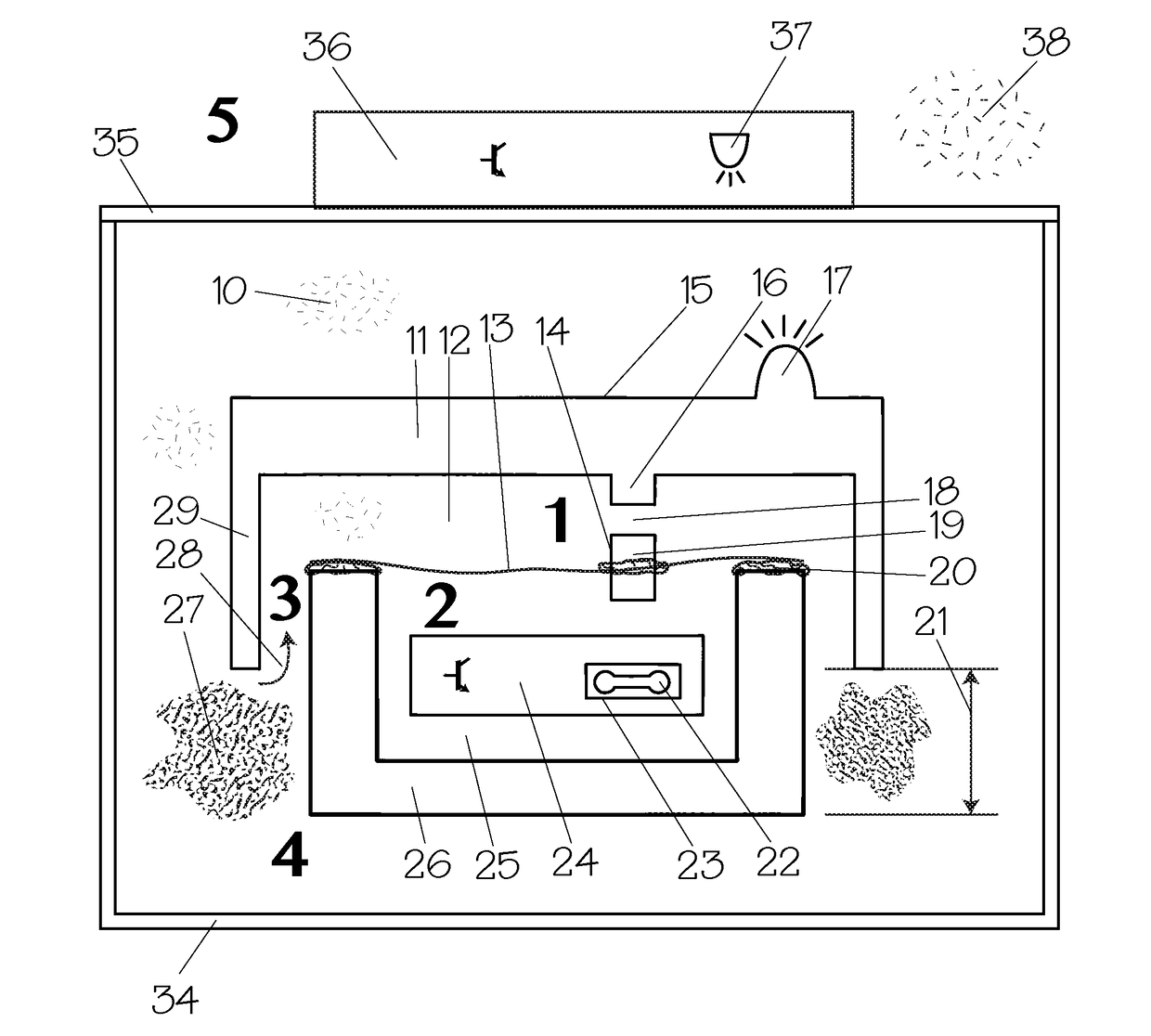Animal Cage
a cage and animal technology, applied in the field of cages, can solve the problems of affecting the results or quality of the study, changing the behavior or health of the animals, and weighing by hand and labor-intensiv
- Summary
- Abstract
- Description
- Claims
- Application Information
AI Technical Summary
Benefits of technology
Problems solved by technology
Method used
Image
Examples
Embodiment Construction
[0015]Turning now to FIG. 1, we see a cut-away side view an embodiment. A cut-away view of the case 26 is shown. The case may be rectangular, oval, or another shape. The shape may fit conveniently in a corner or end of an animal cage. The material may be metal, such as stainless or galvanized steel or aluminum, or a plastic such as ABS or another plastic that is non-toxic if chewed and does not out-gas. The case may be injection molded, 3D printed, monolithic or assembled from components.
[0016]One embodiment comprises a cage 34 hosting a scale (26, 11 and attached elements). Embodiments may include communicating electronics outside the cage 36 that communicate through a cage top 35, using for example, communication elements 17 and 37. The cage top 35 or any portion of a cage between communication elements 17 and 37 must be optically transparent for optical communication or B or E field permissive for radio communications. Some embodiments use narrow beam angles for communication ele...
PUM
 Login to View More
Login to View More Abstract
Description
Claims
Application Information
 Login to View More
Login to View More - R&D
- Intellectual Property
- Life Sciences
- Materials
- Tech Scout
- Unparalleled Data Quality
- Higher Quality Content
- 60% Fewer Hallucinations
Browse by: Latest US Patents, China's latest patents, Technical Efficacy Thesaurus, Application Domain, Technology Topic, Popular Technical Reports.
© 2025 PatSnap. All rights reserved.Legal|Privacy policy|Modern Slavery Act Transparency Statement|Sitemap|About US| Contact US: help@patsnap.com


